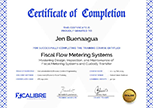| Date | Venue | Fee | |
|---|---|---|---|
| 01 Dec - 05 Dec 2025 | Dubai – UAE | $ 4,950 | Register Now |
| 07 Sep - 11 Sep 2026 | Dubai – UAE | $ 5,950 | Register Now |
| 26 Oct - 30 Oct 2026 | Luanda - Angola | $ 5,950 | Register Now |
| 30 Nov - 04 Dec 2026 | Dubai – UAE | $ 5,950 | Register Now |
About the Course
This 5-day interactive Compressed Air Systems, Pump Systems, and Turbines training course specialises on three system topics; compressed air, pumps, and turbines. Compressed air systems optimisation sections provide comprehensive training on maximising the efficiency, performance, and cost-effectiveness of compressed air systems. The participants will gain a deep understanding of system components, control strategies, and best practices for system design, maintenance, and energy management. It covers system assessment, leakage detection, air demand analysis, and equipment selection. Practical exercises and case studies enable participants to apply learned concepts to real-world scenarios, ultimately improving compressed air systems' overall efficiency and sustainability.
Pump systems optimisation offers in-depth training on improving pumping systems' energy efficiency and reliability. The participants will learn about pump selection, performance curves, system design, performance assessment, and energy-saving strategies. It covers pump curves, pipe sizing, control methods, and maintenance practices. Through practical exercises and case studies, participants will develop skills in analysing system performance, identifying inefficiencies, and implementing optimisation measures to reduce energy consumption, minimise downtime, and enhance overall pump system efficiency.
Furthermore, it gives the participants an understanding of turbine technology, operation, and maintenance. Participants will learn about different types of turbines, their components, their applications, performance characteristics, and efficiency optimisation techniques. It covers topics such as turbine components, control systems, troubleshooting, and maintenance best practices. Participants walk away with the knowledge and skills to manage and optimise turbine systems effectively.
Core Objectives
The delegates will achieve the following objectives:
- Understand the fundamentals of compressed air systems, pump systems, and turbines
- Gain knowledge of the components, principles, and operation
- Analyse and evaluate the performance of compressors, pumps, and turbines
- Identify inefficiencies and efficiency characteristics
- Identify and prioritise areas for improvement
- Evaluate the operational and maintenance requirements of turbines
- Develop strategies for compressor, pump, and turbine selection, system design, and control optimisation
Training Approach
This training course will use proven learning techniques to ensure maximum understanding, comprehension and retention of the information presented. The training course will follow a participative workshop format. It will be focused on developing practical skills that delegates can apply in real-life business situations on return to their organisation.
The Attendees
Professionals who should attend this training course include personnel who influence energy use, operation, or control. It will benefit professionals with many years of experience entering the energy market. Various aspects and systems are covered in detail, providing a valuable benefit to all attendees who influence energy use.
Likewise, it will be valuable to the professionals but not limited to the following:
- Energy Engineers, Auditors, and Consultants
- Chemical, Process, and Mechanical Engineers
- Product Engineers and Technologists
- Operation, Technical Service, and Maintenance Professionals
- Engineers, Consultants, and Professionals
- Technical Professionals responsible for Interdisciplinary Energy Projects
Daily Discussion
DAY ONE: COMPRESSED AIR SYSTEMS - SUPPLY SIDE
- Fundamentals of Compressed Air and its Associated Cost
- Overview of the Main Features of Various Types of Compressors
- Classification of Compressors based on Design and Application
- Positive Displacement Compressors: Reciprocating, Rotary, Vane
- Dynamic Compressors: Centrifugal
- Analysis of Centrifugal Compressor Curves and Efficiency
- Criteria for Controlling and Selecting Compressors
DAY TWO: COMPRESSED AIR SYSTEMS - DISTRIBUTION AND DEMAND SIDE
- Compressed Air Treatment and Filtration
- Compressed Air Dryers: Refrigerated and Desiccant Types
- Condensate and its Treatment
- Storage Tanks and Sizing System Volume
- Compressed Air Distribution Piping
- Quantifying Leakages
- Identifying Inappropriate Uses of Compressed Air and Alternative Solutions
- Determining Artificial Demand and its Impact on System Efficiency
DAY THREE: Pump Systems - Pump Performance
- Overview of Various Types of Pumps: Roto-dynamic and Positive displacement based on Design and Application
- Pump System Fluid Relationships
- Pump Performance Curve Characteristics
- System Curve Characteristic
DAY FOUR: Pump Systems - Pump Operations
- Design of Pump-suction Piping
- Pump Systems Energy Use
- Selection and Sizing of Centrifugal Pumps
- Solving Problems in Operation
- Guidelines for Pump Installation and Operation
- Pump System Control
- Maintenance and Reliability of Pumps
DAY FIVE: TURBINES
- Overview and Classification of Steam Turbines
- Overview and Classification of Gas Turbines
- Power Plants: Simple and Combined Cycles
- Main Elements and Technical Characteristics of Gas Turbine Design
- Backpressure, Condensing, and Extraction Steam Turbines
- Energy Measures and Thermal Efficiencies
- Gas Turbine Deterioration and Maintenance
- Combined Heat and Power: Co-generation, Tri-generation, and Quad-generation
Certificate Awarded
Upon successful completion of this training course, participants will be awarded a Certificate of Completion from XCalibre Training Centre, acknowledging their accomplishment. This certificate serves as a testament to their dedication to developing their skills and advancing their expertise in their respective fields.


